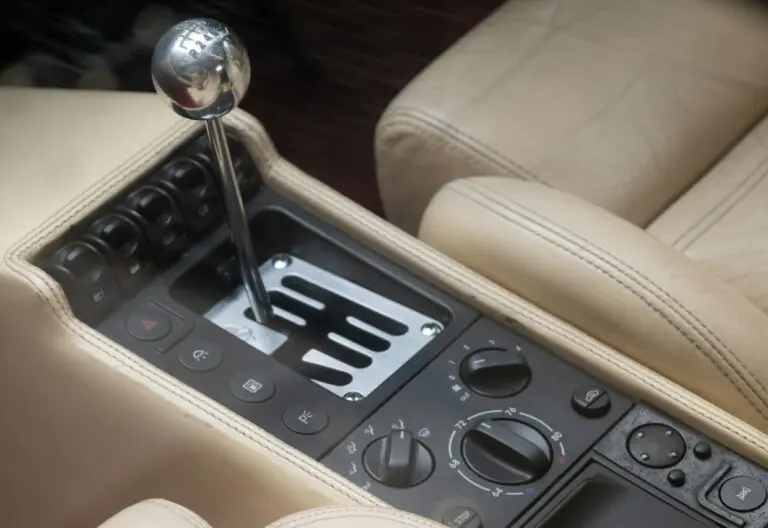Maintaining proper tire pressure is essential for the safe operation of your vehicle. Not only does it improve fuel efficiency and extend the life of your tires, but it also helps ensure optimal handling and braking performance. In this article, we will walk you through the process of checking and adjusting your tire pressure, step by step, to keep you and your vehicle safe on the road.
Purpose of Proper Tire Pressure
The primary purpose of maintaining proper tire pressure is to ensure that your vehicle handles and brakes properly. Underinflated tires can cause a vehicle to handle poorly, making it harder to steer and control. They can also increase stopping distance, making it harder to brake in an emergency situation. In addition, underinflated tires can lead to uneven wear and tear on the treads, which can shorten the life of your tires.
Proper tire pressure is also important for fuel efficiency. Underinflated tires can increase rolling resistance, which makes your vehicle work harder to move down the road. This can decrease your fuel economy and increase emissions.
Benefits of Proper Tire Pressure
Properly inflated tires have many benefits for both the vehicle and the driver. Here are just a few of the benefits of maintaining proper tire pressure:
- Improved handling and braking performance: Properly inflated tires make it easier to steer and control your vehicle, which can increase driver confidence and safety. They also make it easier to brake in an emergency situation, which can help prevent accidents.
- Increased fuel efficiency: Properly inflated tires reduce rolling resistance, which can increase fuel efficiency and decrease emissions.
- Increased tire life: Properly inflated tires can help prevent uneven wear and tear on the treads, which can prolong the life of your tires.
- Cost savings: Properly inflated tires can save you money on fuel and tire replacement costs.
How to Check and Adjust Your Tire Pressure
Checking and adjusting your tire pressure is a simple process that can be done in a matter of minutes.
Here’s a step-by-step guide to help you get started:
Step 1: Gather the necessary tools. You will need a tire pressure gauge, which can be purchased at most auto parts stores.
Step 2: Check your vehicle’s owner’s manual for the recommended tire pressure for your specific vehicle. This information can also be found on a sticker located on the driver’s side doorjamb, or sometimes on the fuel filler door.
Step 3: Remove the valve cap from each tire.
Step 4: Press the tire pressure gauge onto the valve stem of each tire and take a reading. Write down the pressure for each tire.
Step 5: Compare your tire pressure readings to the recommended pressure for your vehicle. If any of the tires are underinflated, use an air compressor or tire inflator (can be found at most gas stations) to add air to the tire until it reaches the recommended pressure.
Step 6: Replace the valve caps on each tire.
Step 7: Repeat the process every month or before long trips to ensure that your tires are properly inflated at all times.
Precautions
While checking and adjusting your tire pressure is a relatively simple process, there are a few precautions you should keep in mind.
- Never overinflate your tires. Overinflated tires can cause uneven wear and tear on the treads, which can shorten the life of your tires.
- Always check your tire pressure when the tires are cold. Tires heat up as you drive, which can cause the pressure inside the tire to increase. If you check your tire pressure after driving, the reading may be higher than it actually is, giving you a false reading. It’s best to check your tire pressure in the morning before you’ve driven the vehicle, or after the vehicle has been parked for a few hours.
- Don’t rely solely on the tire pressure monitoring system (TPMS) in your vehicle. While these systems can be helpful, they are not always accurate and may not pick up on low tire pressure. It’s always best to manually check your tire pressure regularly.
- Be aware of the weather conditions. Cold temperatures can cause your tire pressure to drop, so it’s important to check your tire pressure more frequently during the winter months.
- Don’t forget to check your spare tire. Many people forget to check the pressure in their spare tire, which can lead to problems if they need to use it.
- Always use the recommended pressure for your vehicle. Don’t assume that the maximum pressure listed on the sidewall of the tire is the correct pressure for your vehicle. Always use the pressure recommended by the manufacturer.
In conclusion
Maintaining proper tire pressure is essential for the safe operation of your vehicle. It’s important to check and adjust your tire pressure regularly to ensure that your vehicle handles and brakes properly, to increase fuel efficiency, and to prolong the life of your tires. With the step by step guide provided above, checking and adjusting your tire pressure is a simple process that can be done in a matter of minutes. Remember to always be cautious and use the recommended pressure for your vehicle. Happy and safe driving!



















